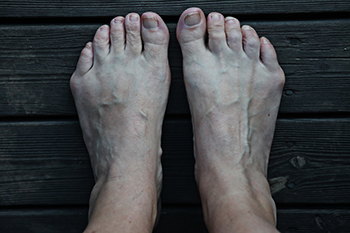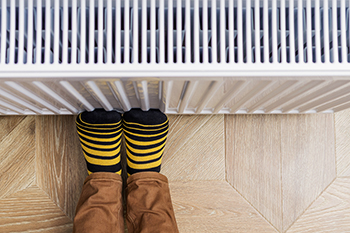 Many active people develop what is known as Achilles tendonitis, which occurs when the tendon becomes inflamed over a period of days, rather than suddenly. It is usually the result of repetitive use and the tightening of the calf muscles. A regular routine of stretching can help to strengthen the tendon and lengthen the muscles. Before starting any exercises, it may be wise to consult with a podiatrist who can examine the painful area and diagnose your injury properly. The calf is made up of two muscles, the gastrocnemius and the soleus, that the Achilles tendon connects to your heel. Both can be stretched using the same exercise in slightly different ways. Stand with both hands pressed against a wall, touch the toes of one foot to the wall with the knee bent. Place the leg to be stretched straight back, with the heel up and the leg straight. Be sure that the heel lines up with the foot. Slowly lower the heel. This should stretch the gastrocnemius (larger) calf muscle. Hold the stretch for a few seconds and repeat several times. To stretch the soleus muscle, do the same exercise with both legs bent. This releases the gastrocnemius and allows the smaller muscle to be stretched. If you are afflicted with an Achilles tendon injury, it is suggested that you schedule an appointment with a podiatrist.
Many active people develop what is known as Achilles tendonitis, which occurs when the tendon becomes inflamed over a period of days, rather than suddenly. It is usually the result of repetitive use and the tightening of the calf muscles. A regular routine of stretching can help to strengthen the tendon and lengthen the muscles. Before starting any exercises, it may be wise to consult with a podiatrist who can examine the painful area and diagnose your injury properly. The calf is made up of two muscles, the gastrocnemius and the soleus, that the Achilles tendon connects to your heel. Both can be stretched using the same exercise in slightly different ways. Stand with both hands pressed against a wall, touch the toes of one foot to the wall with the knee bent. Place the leg to be stretched straight back, with the heel up and the leg straight. Be sure that the heel lines up with the foot. Slowly lower the heel. This should stretch the gastrocnemius (larger) calf muscle. Hold the stretch for a few seconds and repeat several times. To stretch the soleus muscle, do the same exercise with both legs bent. This releases the gastrocnemius and allows the smaller muscle to be stretched. If you are afflicted with an Achilles tendon injury, it is suggested that you schedule an appointment with a podiatrist.
Achilles tendon injuries need immediate attention to avoid future complications. If you have any concerns, contact one of our podiatrists of Illinois . Our doctors can provide the care you need to keep you pain-free and on your feet.
What Is the Achilles Tendon?
The Achilles tendon is a tendon that connects the lower leg muscles and calf to the heel of the foot. It is the strongest tendon in the human body and is essential for making movement possible. Because this tendon is such an integral part of the body, any injuries to it can create immense difficulties and should immediately be presented to a doctor.
What Are the Symptoms of an Achilles Tendon Injury?
There are various types of injuries that can affect the Achilles tendon. The two most common injuries are Achilles tendinitis and ruptures of the tendon.
Achilles Tendinitis Symptoms
- Inflammation
- Dull to severe pain
- Increased blood flow to the tendon
- Thickening of the tendon
Rupture Symptoms
- Extreme pain and swelling in the foot
- Total immobility
Treatment and Prevention
Achilles tendon injuries are diagnosed by a thorough physical evaluation, which can include an MRI. Treatment involves rest, physical therapy, and in some cases, surgery. However, various preventative measures can be taken to avoid these injuries, such as:
- Thorough stretching of the tendon before and after exercise
- Strengthening exercises like calf raises, squats, leg curls, leg extensions, leg raises, lunges, and leg presses
If you have any questions please feel free to contact our offices located in Wheeling and Berwyn, IL . We offer the newest diagnostic tools and technology to treat your foot and ankle needs.





